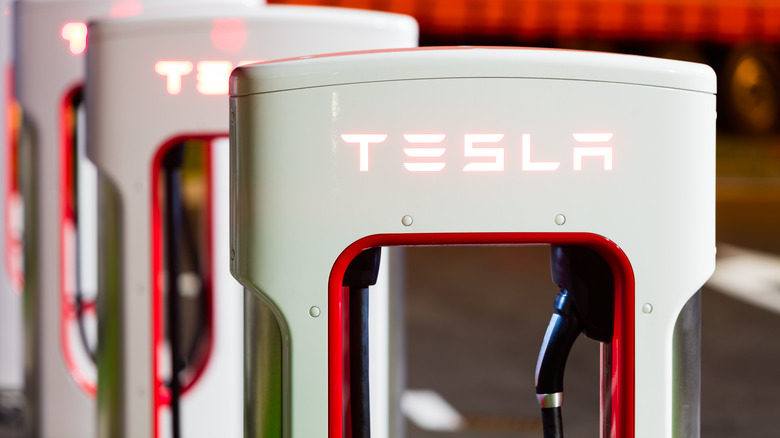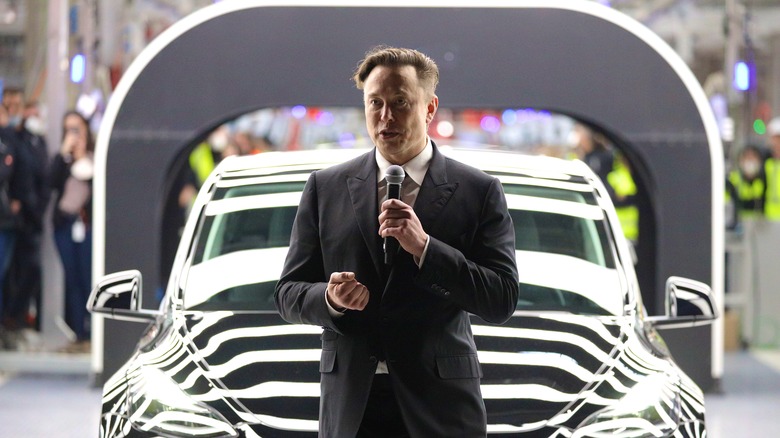The Reason Why Tesla Hates Advertising, But Just Might Try It
At Tesla's annual shareholder meeting CEO Elon Musk surprised attendees and viewers by confirming that Tesla is finally warming to the concept of advertising its pioneering line of electric cars. Responding to an investor's question, Musk stated, "We will try a little advertising and see how it goes."
Previously, Tesla relied on a grassroots strategy from its loyal fan base to spread the word about the brand. Though, to be fair, the awards issued by the brand's so-called Loot Box program could be construed as payment, albeit not in a traditional sense. Besides eschewing paid media advertising, Musk takes things a step further by refusing to pay celebrities to drive Tesla cars or even offer a discount to high-profile clients. There have been a certain few cracks in this policy, though, such as in 2020 when Chinese influencer Viya was tapped to promote the Model 3 in an hour-long stream.
Some industry analysts have gone so far as to say that the mainstream is critical of the Tesla brand since the company does not provide advertising revenue. According to MotorBiscuit, some manufacturers have historically spent as much as $4,000 per vehicle sold, whereas Tesla spent $3 per vehicle sold in 2018. Musk claims that the money saved on advertising goes directly into improving its vehicles instead, although we suspect that at least a portion of that savings contributes to Tesla's famously hefty profit margins.
Tesla faces increased competition in the EV market
The temptation to start advertising is likely twofold. For years, Musk maintained — correctly — that demand for Tesla cars outstripped supply, but Tesla has ramped up production capacity in recent years, resulting in more inventory that needs to be sold.
We've already witnessed a reaction to this with an endless barrage of price tweaking to find the "sweet spot" — mostly discounts. Also, the number of EV competitors has exploded. Tesla may have captured the early adopters in the EV space, but Visual Capitalist predicts that U.S. buyers will have 134 different all-electric vehicles to choose from by the year 2024 and the manufacturers of those cars won't be shy about flaunting them.
In a recent interview with CNBC, Musk said that ads will need to be "informative" while highlighting some lesser-known features that the public may not be familiar with (via The Verge). He also suggested that the ads should be "ideally aesthetically pleasing." That said, in typical Tesla style, the brand will probably make things up as it goes regarding its advertising strategy, so we can almost surely expect some interesting and entertaining creative content to emerge.
The elephant in the room is whether Musk will double dip and capture some of Tesla's advertising budget himself by promoting the brand on social media giant Twitter, which he also owns.

